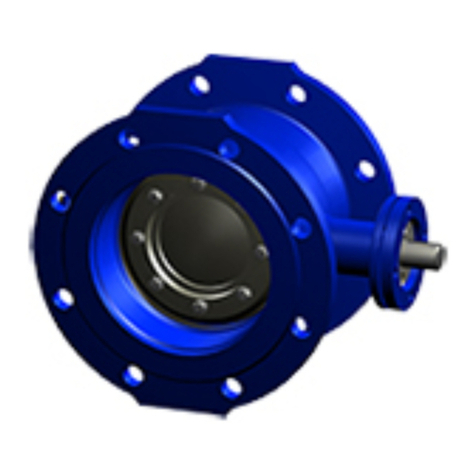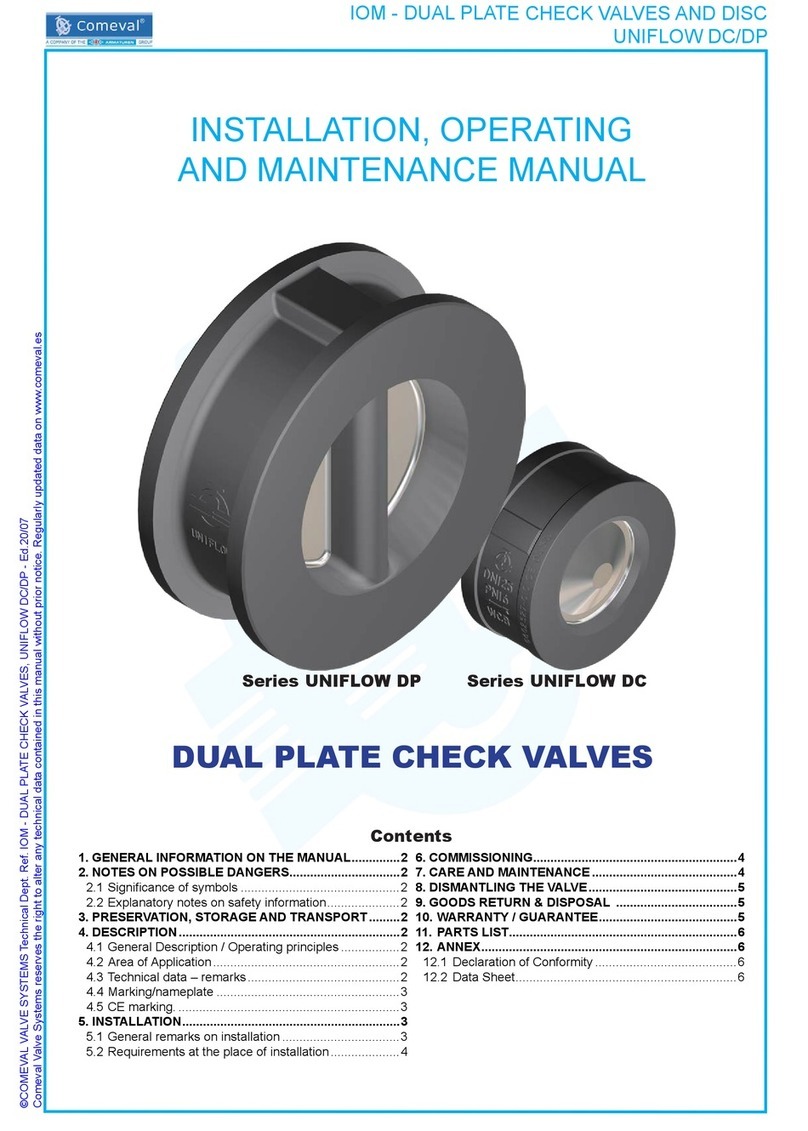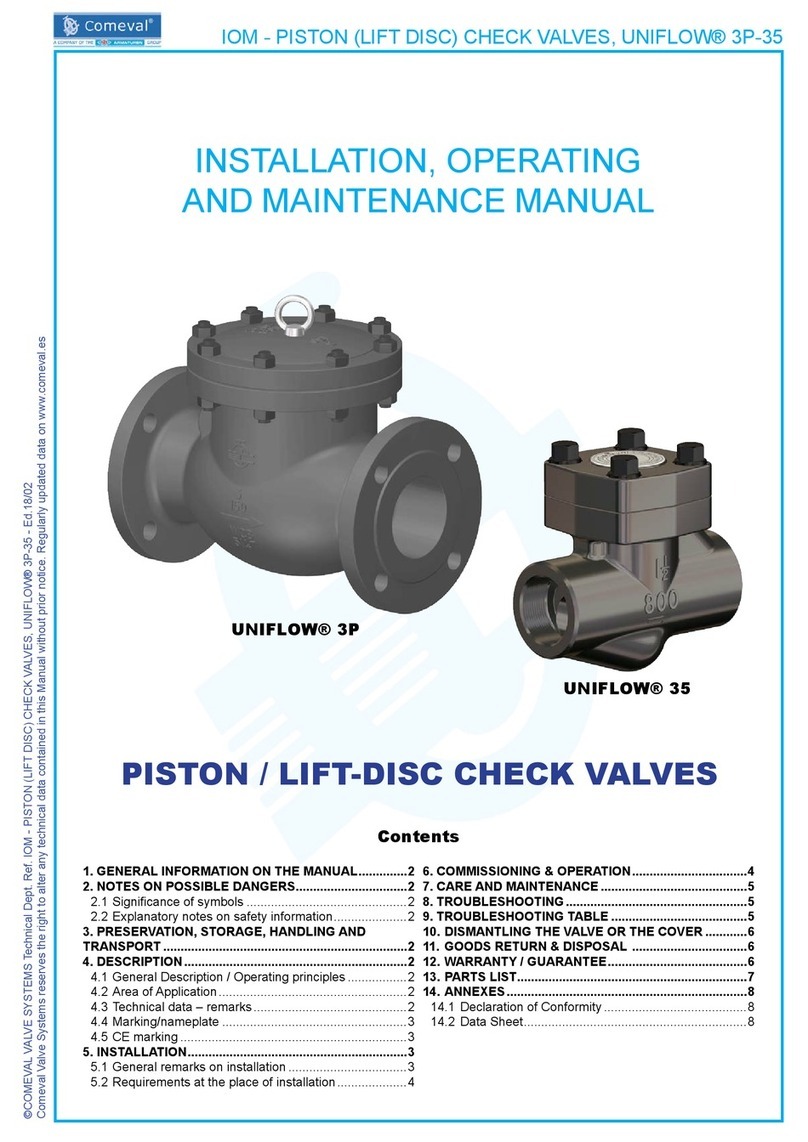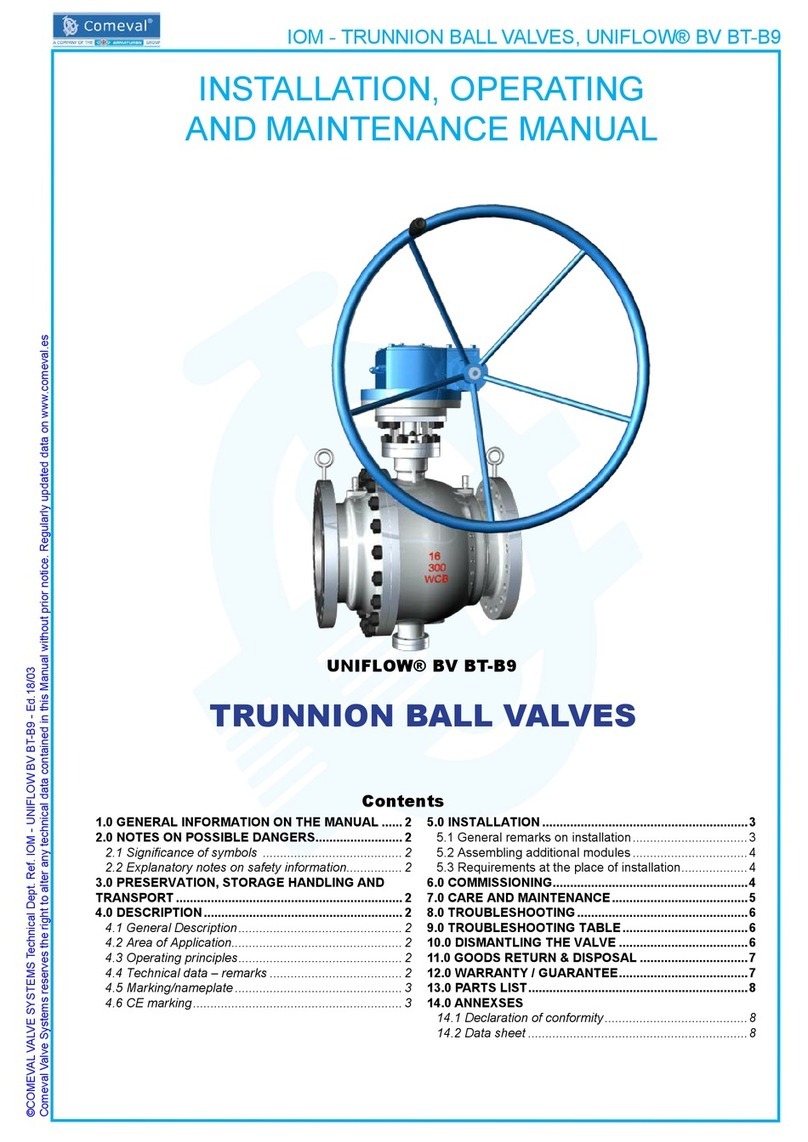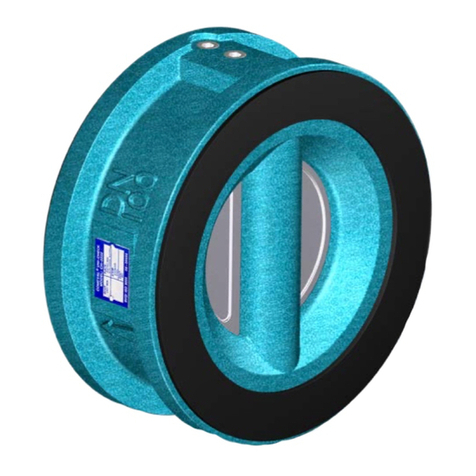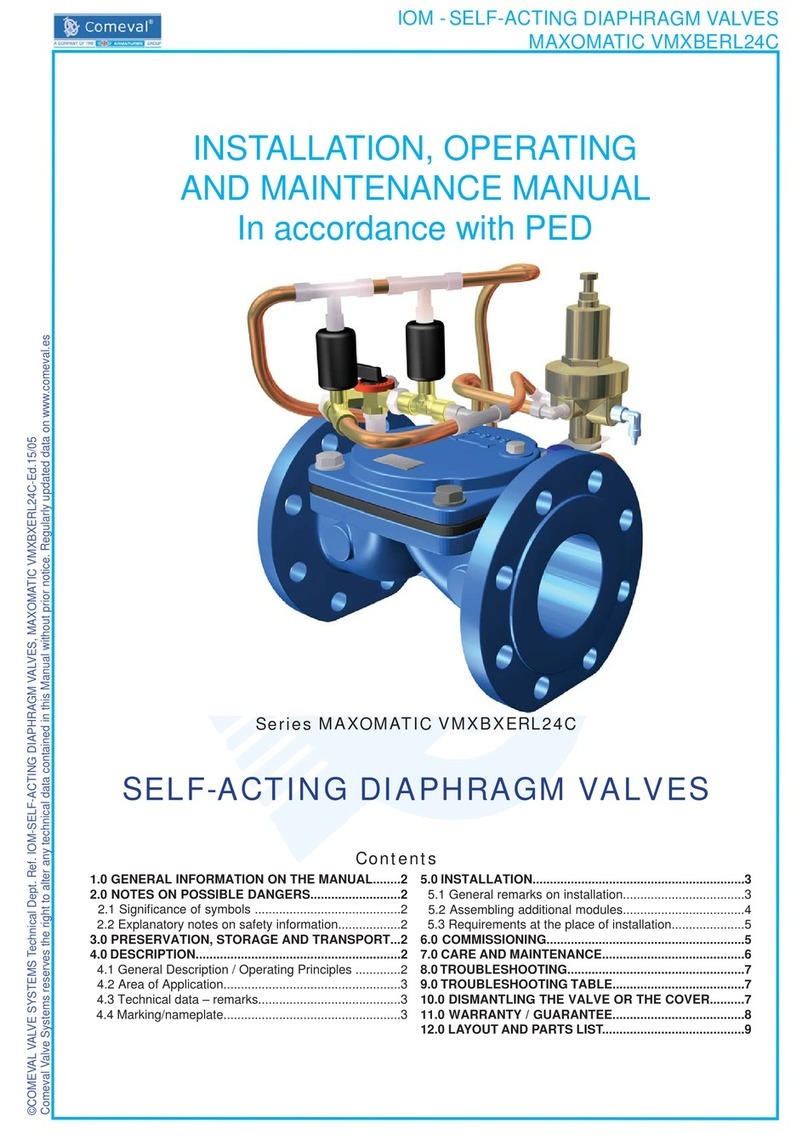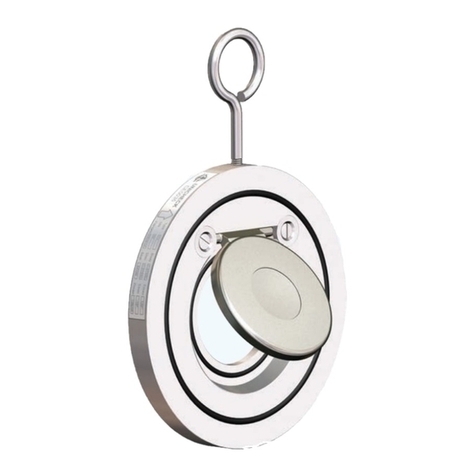
IOM - SLEEVED PLUG VALVES, UNIFLOW PP
©COMEVAL VALVE SYSTEMS Technical Dept. Ref. IOM - SLEEVED PLUG VALVES, UNIFLOW PP - Ed.16/05
Comeval Valve Systems reserves the right to alter any technical data contained in this Manual without prior notice. Regularly updated data on www.comeval.es
- Check the valve surface inside and outsideand retouch coating protection if any when needed. If advanced corrosion
or erosion is observed, double check service and valve features and replace the valve properly.
- Sleeve, packing, gaskets, plug and stem can be easily dismounted by using common tools.
- In case of body/cover leakage, dismount the cover, remove old gasket, clean sealing surfaces and use a new gasket.
- In case of seat leakage, remove the valve cover to clean the seating surfaces or grind them if necessary. When mou-
nting the cover back use always new gasket, and tighten the cover bolts evenly crosswise with moderate and uniform
torque. Retighten them if leakage is detected under pressure. If it is not possible to repair the damages replace the valve
and contact us for assistance.
- If the valve is leaking through the stem, try rst to retighten the packing gland without compromising stem smooth mo-
vement. For this purpose turn clockwise all adjusting packing gland nuts little by little by 1/4-1/2 turn, evenly crosswise
each time until leakage disappears: In this way we minimize valve operation torque increase and optimize packing life.
- If leakage cannot be corrected, old packing must be replaced. Remove packing gland, remove old packing by means of
a wooden dowel, make sure that stem and packing area are thoroughly cleaned and place new packing rings ensuring
its correct position. If stem is worn out or scratched replace it. Then place back packing gland and tighten gland bolts
moderately.
- Disassembly / Assembly can easily be done by common tools. Herewith an explanation:
Before the top-works are removed from the plug valve, the manual operator (wrench, handlever, or gear operator) should
be removed. To ensure correct orientation of the operator durning reassembly, place temporary alignment marks on
the plug stem and the operator. This should not be a scatch mark, because that could cause a leak path on the sealing
portion of plug stem.
Once the operator is removed, the stop collar and/or any associated washers can be removed from the top-works. The
gland-ange bolting should be slowly loosened before removing the cover bolting. If no gland ange exists, the cover
bolting should be loosened. With the bolting loosened, the plug should be turned and slightly raised to vent any trapped
process uid in the valve.
The plug should be lifted straight up from the body, followed by inspection for any scoring or process damage, such as
erosion or cavitation. If the plug uses O-rings or sleeves as the primary sealing mechanism, the O-rings/sleeves should
be removed. If the plug uses lubricant as a sealant, remove any residue.
All disassembled parts should be cleaned thoroughly and then visually inspected for damage or wear. All parts with signi-
cant damage should be replaced as well as all soft goods (gaskets, diaphragms, O-rings, sleeve, etc.) The body should
be examined carefully for damage, and any external areas of oxidation should be repaired and repainted.
Using new soft goods, the O-rings/sleeves, the diaphragm, and / or packing should be replaced. Before replacing the
diaphragm and packing, however, the plug stem must be checked for any surface irregularities that could damage the
soft goods during installation. Any minor irregularities in the plug stem should be lightly polished. If major scoring exists,
the plug should be replaced. The diaphragm, packing, spring washers, thrust collars, etc., should be reinstalled on the
plug stem in the same order as they were removed. The assembled plug is then placed into the body or into the sleeve
inside the body.
The cover is then replaced, making sure that the diaphragm or gasket is in place to provide a seal between the body and
cover. The cover bolting can then be reinstalled, as well as the gland-ange assembly. At this point, the cover and gland-
ange bolting should be nger-tight. In a criss-cross manner, the cover bolting should be evenly tightened to the torque
values provided by the manufacturer. After the cover bolting has been reinstalled, the plug should be rotated several
times to ensure smooth stoking as well as correct orientation of the body, sleeve, and plug ports.
- If the valve was removed from the line, it should be reinstalled, using new ange gaskets.
After any maintenance work please refer to chapters 5 and 6 for installation / commissioning.
Recommended Spare parts:
Use only original spare parts.
It is advisable to keep packing rings gaskets and diaphragms as spare parts. Type and number of each spare part to be
stored according to many factors: service level, valves quantity, etc. In many cases a good choice is to keep complete
valves as spare part.
ATTENTION!
- In the event of infrequent use, operate the valve as frequently as possible to avoid deposits of dirt and valve
blocking.
- When using the valve as an end seal, the employers’ liability insurance association of the gas and waterworks
species the use of a safety precaution such as a plug-in disc, blind ange, etc. (observe the information in EN
13857). With a medium jet that freely exists, you must secure the exit area.
- Before disassembling the valve, note chapters 10 & 11.
Page 5
